Fortran Allocate Source

Analyzing Stock Price Time Series With Modern Fortran Part 2 By Milan Curcic Modern Fortran Medium

Allocate Multiple Arrays With Single Shape Stack Overflow
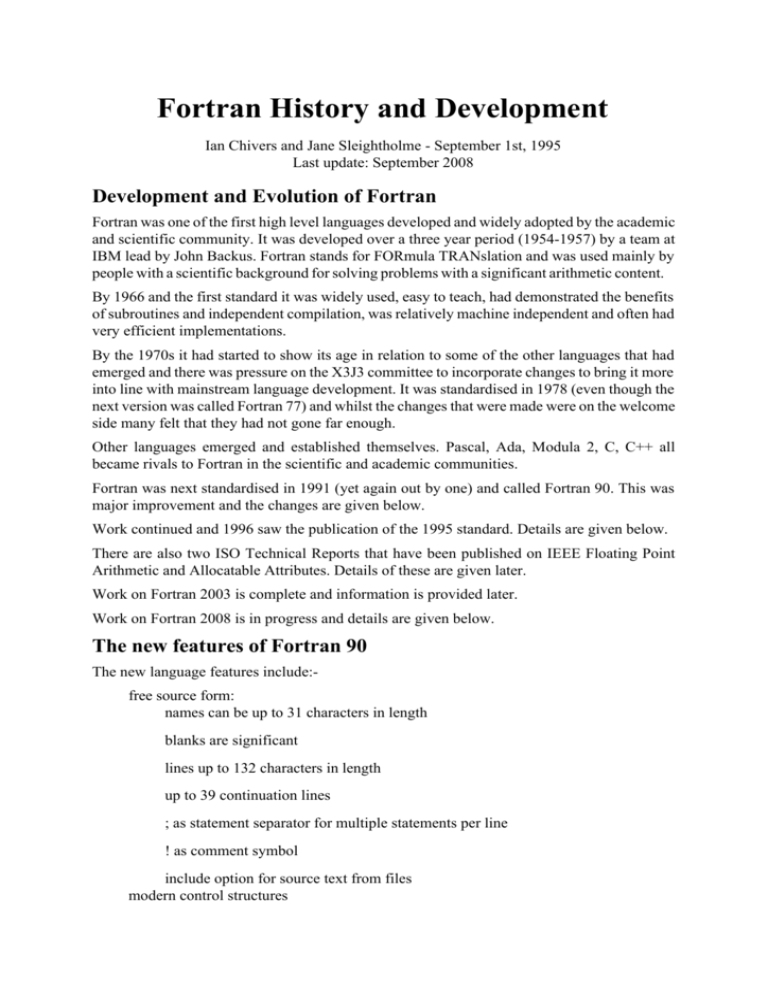
Fortran History And Development

Locate Fortran And C

Example Illustrating The Handling Of Common Variants By Emulating The Download Scientific Diagram

Flowchart For Cuda Fortran Implementation Of Funwave Tvd Download Scientific Diagram
ALIAS Option for ATTRIBUTES Directive;.
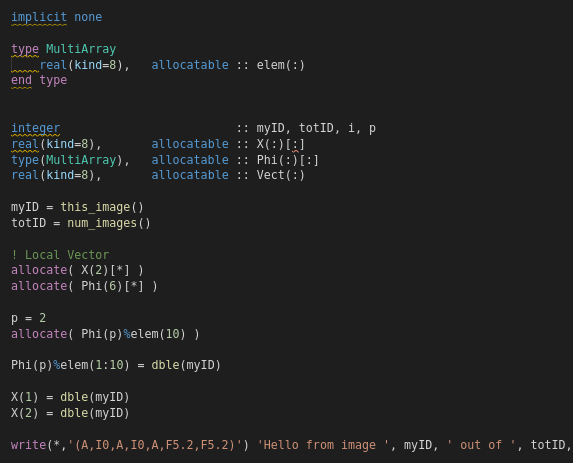
Fortran allocate source. The use of f90 suffix to indicate freeform source (which was introduced in the Fortran 90 standard) often tempts the programmer to use the suffix to indicate the language standard to which the source code conforms For example, we may see files with f03 or f08 suffixes This is generally to be avoided most Fortran 03 source is also. Lambda expressions in Fortran Arjen Markus arjenmarkus@deltaresnl 1 Introduction allocate( lambda%expr, source=expr ) end subroutine set_expression The dirty work is done by the correct_pointer routine Scan the expression tree for references in the expression to the various. During the parsing, every Fortran source code line now goes through the PP and only then the code is interpreted as a Fortran code This improvement enables the codecompletion in a code which uses such PP directives As an example, I created a short tutorial how to use Fortran Template Library in CBFortran.
ALLOCATE ( A (N) ) where N is an integer variable that has been previously assigned To ensure that enough memory is available to allocate space for your array, make use of the STAT option of the ALLOCATE command ALLOCATE ( A (N), STAT = AllocateStatus) IF (AllocateStatus /= 0) STOP "*** Not enough memory ***". allocate(character(len(='Something to fill the two elements'))StrArray(2)) !. In the settings, search for “executor map”, the relevant item is the “Coderunner Executor Map” Click “Edit in settingsjson” The settings file lists the rule “Code runner” is using to compile source files Line 1 is for C, and line 2 is the rule for C The default for C/C and fortran reads.
Fortran 90/95 reference As I started using Fortran, I found a number of references online, but none were completely satisfactory to me The best ones I’ve found are Introduction to Fortran 90 at Queen’s University of Belfast Fortran 90 for the Fortran 77 Programmer The textbook Fortran 90 Programming, by Ellis, Philips, Lahey was also. Fortran projects sometimes have a mixture of code from different sources Some of it is written in Fortran 77, some using more recent standards Some code may need to be preprocessed (eg files with extension F90) and some may not Our Makefile can be modified easily to deal with the variety. 21 Standard Fortran 95 Generic Intrinsic Functions The generic Fortran 95 intrinsic functions are grouped in this section by functionality as they appear in the Fortran 95 standard The arguments shown are the names that can be used as argument keywords when using the keyword form, as in cmplx(Y=B, KIND=M, X=A) Consult the Fortran 95 standard for the detailed specifications of.
Fortran Dynamic Arrays A dynamic array is an array, the size of which is not known at compile time, but will be known at execution time Dynamic arrays are declared with the attribute allocatable The rank of the array, ie, the dimensions has to be mentioned however, to allocate memory to such an array, you use the allocate function. Formerly FORTRAN) is a generalpurpose, compiled imperative programming language that is especially suited to numeric computation and scientific computing Fortran was originally developed by IBM in the 1950s for scientific and engineering applications, and subsequently came to dominate scientific computing It has been in use for over six decades. It is an error to allocate an array twice !.
The following code seems to partially disagree with other Fortran compilers program p implicit none integer, allocatable a(), b(), c() allocate(a, source=f(3)) allocate(b, source=g(3)) allocate(c, source=h(3)) write(*,*) lbound(a,1), ubound(a,1) !. Within the PROGRAM statements, your Fortran program can define functions, declare variables to be used in these functions, just like in other programming languages such as R or PythonWithin these statements, this is where the calculations on data are performed in the program Defining variables Variables represent data or values used in your program. Fortran allocate sourceAllocate Interface 191 statements;The only way to allocate aligned memory in standard Fortran is to allocate it with an external C function, like the fftw_alloc_real and fftw_alloc_complex functions Fortunately, Fortran 03 provides a simple way to associate such allocated memory with a standard Fortran array pointer that.
X8664 (Intel 64 and AMD64) Intel Xeon Phi coprocessor;. Building Intel® Fortran/C MixedLanguage Programs (Windows*) Implementation Specifics Fortran Module Naming Conventions;. That is, that it is not possible to segfault in deallocate () This is happening under absoft f90 in linux The machine is a dual.
Fortran 90 vs Fortran 77 •Fortran 90 was a major revision to Fortran 77 •Fortran 77 is a complete subset of Fortran 90 •F90 introduced major new features •Also introduced many useful minor features which can be gradually introduced. Or alternatively allocate(StrArray,source='1 This is the first element','2. No matter if you are passing arrays in or out, always allocate them in C first, and you are (in C) responsible for the memory management Use Fortran to.
Lahey/Fujitsu Fortran ALLOCATE Statement Description The ALLOCATE statement dynamically creates storage for array variables having the ALLOCATABLE or POINTER attribute If the object of an ALLOCATE statement is a pointer, execution of the ALLOCATE statement causes the pointer to become associated If the object of an ALLOCATE statement is an. LFortran is a modern opensource (BSD licensed) interactive Fortran compiler built on top of LLVM It can execute user’s code interactively to allow exploratory work (much like Python, MATLAB or Julia) as well as compile to binaries with the goal to run user’s code on modern architectures such as multicore CPUs and GPUs. An allocate shape specification is lowerbound upperbound A DEALLOCATE statement is DEALLOCATE (allocateobjectlist , STAT = scalarintegervariable ) Things to Know Each allocate object must be an allocatable array or a pointer;.
Handling Fortran Array Pointers and Allocatable Arrays;. Fortran uses the Allocate statement, not a malloc () or calloc () function Once allocated, you refer to allocatable variables and arrays by the data object name, not through a pointer References and definitions work in exactly the same way as for scalar variables and fixedsize arrays. The Intel Fortran Compiler Classic fully supports Fortran through the 18 standard The Intel Fortran Compiler (Beta) supports full Fortran 77/90/95 and has partial support of the Fortran 03 standard Architectures IA32;.
The STAT= option Immediately before deallocation, allocated () returns True As I understand it, STAT= should cause the deallocation to return control to the program, even if it failed;. The optional source= argument to allocate specifies sourced allocation In our example above, the allocate statement will allocate als with the same dynamic type as sh and with the same value(s) of sh Note that the declared type of the source= must be the same or a type extension of the allocate argument (eg, als) 3 Unlimited Polymorphic. Handling Fortran Array Descriptors;.
FORTRAN90 Source Codes FORTRAN90 Source Codes allocatable_array_test alpert_rule , a FORTRAN90 code which can set up an Alpert quadrature rule for functions which are regular, log (x) singular, or 1/sqrt (x) singular alpert_rule_test. Allocate( r(100) *, source=00 ) allocate( c*, source=cmplx(00,00) ) allocate( i7,8,*, source=0 ) Sourced allocation was added in Fortran 03 Allocation and deallocation of coarrays involve implicit image synchronisation Hence coarray allocation/deallocation must appear only in contexts which allow image control statements. When you use an ALLOCATE statement without specifying the bounds for an array, the bounds of source_expr in the SOURCE= or MOLD= specifier determine the bounds of the array Subsequent changes to the bounds of source_expr do not affect the array bounds Note In the same ALLOCATE statement, you can specify only one of SOURCE= or MOLD=.
So check it has not been allocated first if (not allocated(foo)) then allocate(bar(10, 2)) end if Once a variable is no longer needed, it can be deallocated deallocate(foo) If for some reason an allocate statement fails, the program will stop. In Fortran 08, when you use an ALLOCATE statement without specifying the bounds for an array, the bounds of source_expr in the SOURCE= specifier determine the bounds of the array The second enhancement is the addition of the MOLD= specifier The MOLD= specifier works almost in the same way as SOURCE=. ALLOCATED (The GNU Fortran Compiler) Description ALLOCATED (ARRAY) and ALLOCATED (SCALAR) check the allocation status of ARRAY and SCALAR, respectively Standard Fortran 90 and later Note, the SCALAR= keyword and allocatable scalar entities are available in Fortran 03 and later Class Inquiry function Syntax.
Fortran (/ ˈ f ɔːr t r æ n /;. It looks like it works, but it may not be the most efficient, so not likely what you want to use if performance matters It appears we allocate the space on the device, allocate a temp on the host, move the “uninitialized” data from device back to the host temp, copy the src data to the host temp, then copy it back to the device, and delete the host temp That explains the warning from. Fortran 90 Dynamic Memory The size of arrays can now be specified at run time Here's how a typical Fortran 77 program would manage an array whose size could vary at run time integer inmax parameter (inmax=100) real*8 array (inmax) !.
The New Features of Fortran 03 John Reid, WG5 Convener, JKR Associates, 24 Oxford Road, Benson, Oxon OX10 6LX, UK jkreid@rlacuk The aim of this paper is to summarize the new features in the Final Committee Draft (FCD) of the Fortran 03 standard (WG5 03) We take as our starting point Fortran 95 plus the two official. Returning Character Data Types;. The Fortran Standards Committee responds to questions of interpretation about aspects of Fortran In addition, you can omit the bounds in the ALLOCATE statement if you provide source_expr in the SOURCE= or MOLD= specifier The real and imaginary parts of a complex entity can be accessed independently by using complex part designators.
Prints 1 3 write(*,*) lbound(b,1), ubound(b,1) !. Integer, dimension (),allocatableb allocate (b,source=a) end program allocate_test allocate (b,source=a) 1 Error Array specification required in ALLOCATE statement at (1) It is neither a bug with gfortran nor a bug in your code You need to read the Fortran 95, 03, and 08 standards;. Legacy Extensions ATTRIBUTES Directive Options;.
Allocate( lambda%expr, source=expr ) end subroutine set_expression Arjen Markus Experimental Programming in Fortran The Fortran 03 standard introduced objectoriented programming, based on classes { the C style Typical concepts Objects based on classes, extensible via. The ALLOCATE statement may also be used to instantiate a class library, by using the Fortran 03 SOURCE keyword Syntax ALLOCATE (alloclist , STAT=statvar, SOURCE=srcref) WHERE alloclist is a list of variables having the ALLOCATABLE or POINTER attributes, or reference to a class instance declared with the POINTER or ALLOCATABLE attribute statvar is a. First, you don't show the declarations of a and b In a sourced allocation the objects to be allocated must be type compatible with the source The simple case real, allocatable, dimension () a, b allocate ( a (2), b (2) ) a () = 00 b () =.
Prints 1 3 write(*,*). The validity of code like integer, allocatable array()array = (/1,2,3/)end depends on the standard of Fortran used to interpret it Fortran 03 introduced the concept of automatic allocation on intrinsic assignment Before Fortran 03 the array on the lefthand side of such an assignment statement must be allocated, and of the same shape. It is possible to get it on Windows with Windows Subsystem for Linux (WSL.
GNU Fortran, or gfortran, part of the GNU Compiler Collection (GCC), is a Free and Open Source Fortran compiler which is still under active development and supports all the features of the latest Fortran 18 standard gfortran is natively available on Linux and MacOS;. Where possible, an ALLOCATE statement for an ALLOCATABLE array (or a POINTER used as a dynamic array) should be coupled with a DEALLOCATE within the same scope If an ALLOCATABLE array is a PUBLIC MODULE variable, it is highly desirable if its memory allocation and deallocation are only performed in procedures within the MODULE in which it is declared. IA64 (Itanium 2) X e architecture;.
The first technique involves adding a library file directly to a Simply Fortran project This process is identical to adding a source file to a project First, select “Add File (s)” from the Project menu Using the file selection dialog, navigate to the library file for inclusion;. Fortran Build Tools CMake CMake is a crossplatform, opensource build system with firstclass Fortran support It knows most Fortran compilers and includes automatic Fortran dependency resolution and can be used for unit and regression testing, software building, system introspection, crosscompilation, and redistributable software packaging.
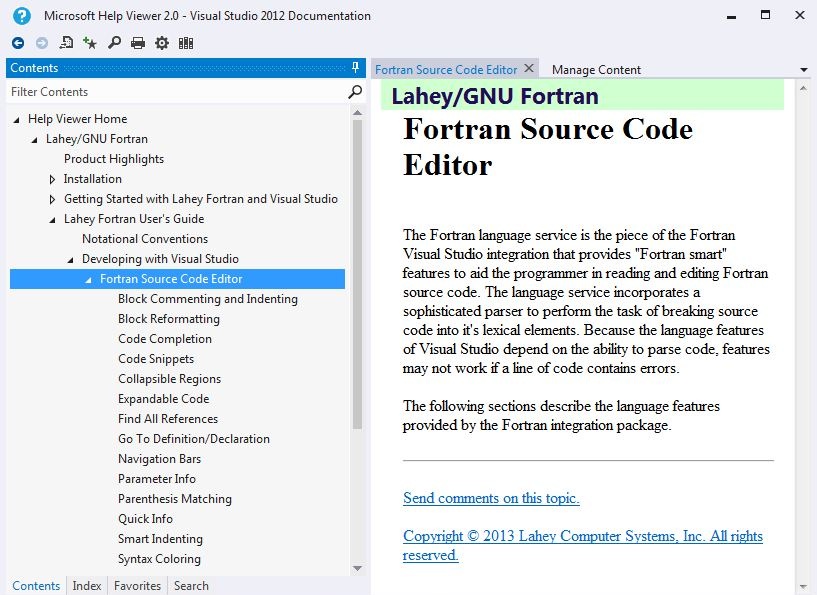
우림텍 Lf Gnu Fortran

A Survey On Resource Allocation In High Performance Distributed Computing Systems Sciencedirect
Dl Acm Org

Analyzing Stock Price Time Series With Fortran Arrays Part 2 Manning

The User Interface Settings Global Settings Dialog Hooks Memory Allocation Hooks

Solving Pdes With Pgi Cuda Fortran Part 1 Introduction To Nvidia
2

How To Optimize Data Transfers In Cuda Fortran Nvidia Developer Blog

R Package With Fortran Module On Windows Undefined Reference To Stack Chk Fail Stack Overflow
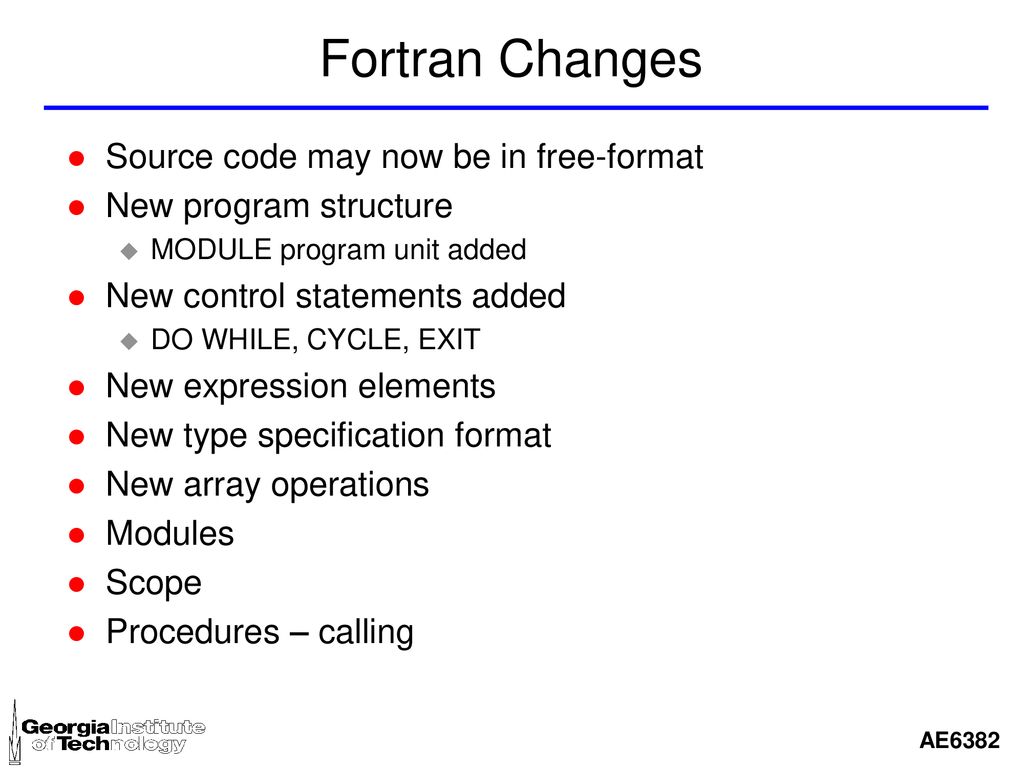
History Of Computing Fortran Ppt Download
2

Fortran An Overview Sciencedirect Topics

A Source To Source Translation Of Coarray Fortran With Mpi For High Performance Semantic Scholar
Variable Length Allocatable String Array Issue 245 Jacobwilliams Json Fortran Github

Research Software Engineering Sheffield Nag Fortran Compiler 6 1 Released

Fortran Function Return Value Polymorphism Help Fortran Discourse
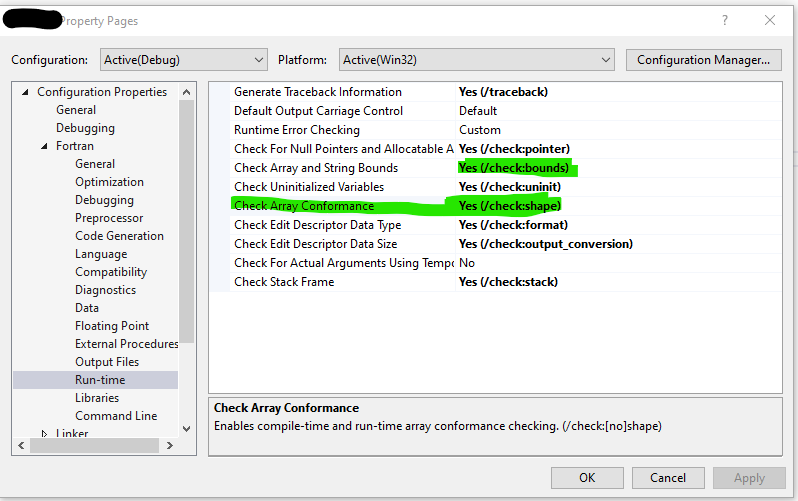
Problems With Allocatable Arrays Real8 Accessing Ranges Not Allocated In Arrays In Fortran Intel Communities
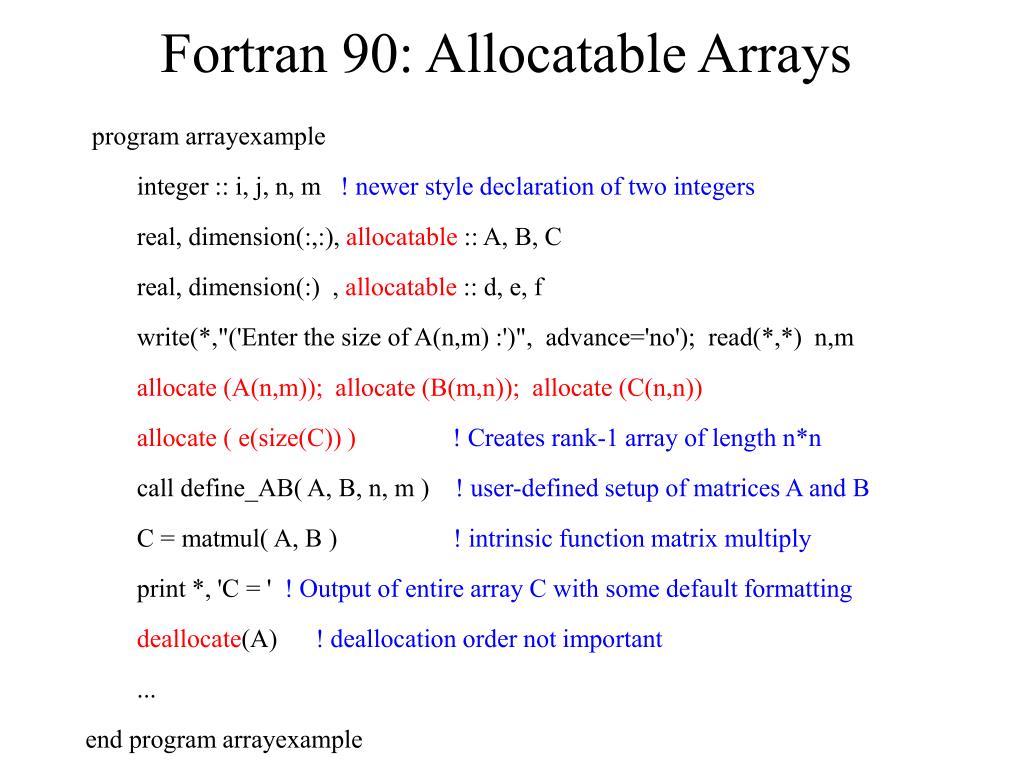
無料ダウンロード Fortran Allocate

Dynamically Allocated 2d Array C Slide Share

Coarray Fortran Opensource Compilers And Tools For Scalable

Pdf Generic Programming In Fortran 90 Arjen Markus Academia Edu
J3 Fortran Org
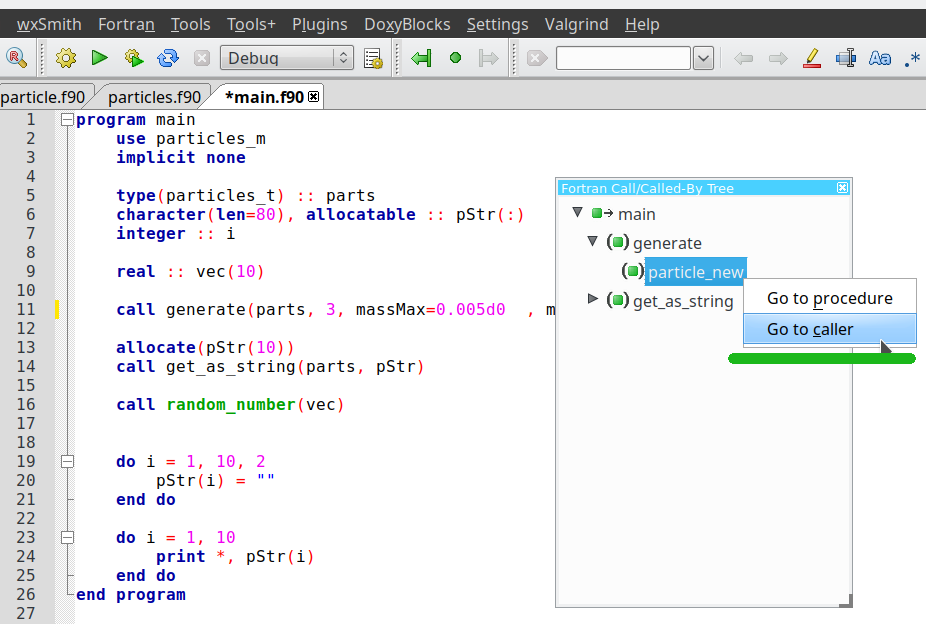
Code Blocks Ide For Fortran Cbfortran

5 Reasons Why Fortran Is Still Used
Phy Ohio Edu
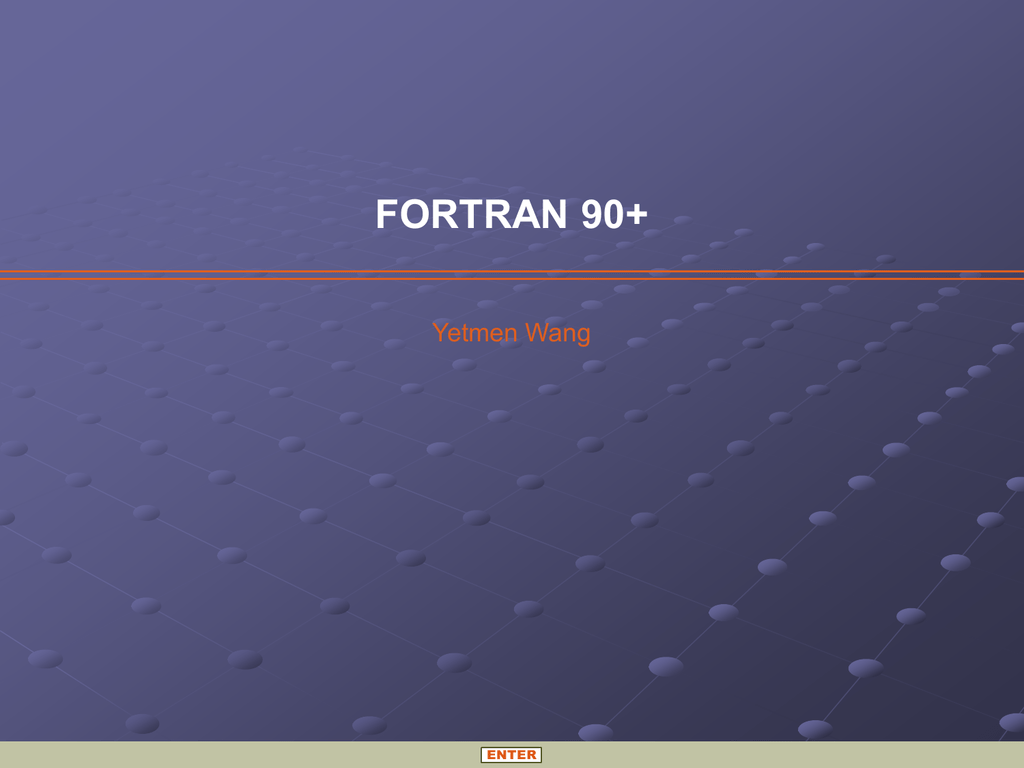
Fortran History

Fortran 90 And Computational Science Sherrill Fortran 77 Control Structures Numeric Processing
2

Fortran Wiki Thereaderwiki
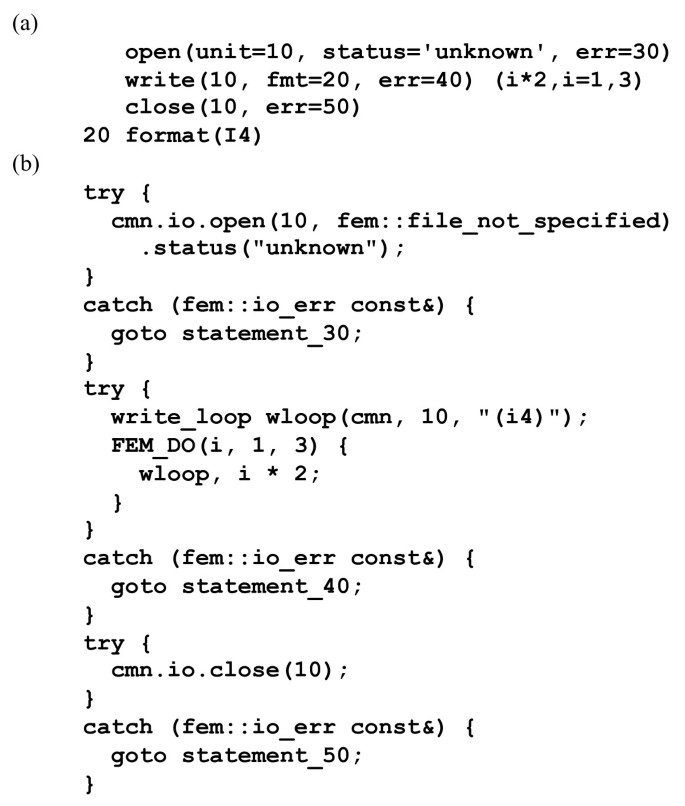
Automatic Fortran To C Conversion With Fable Source Code For Biology And Medicine Full Text
Koyado Com
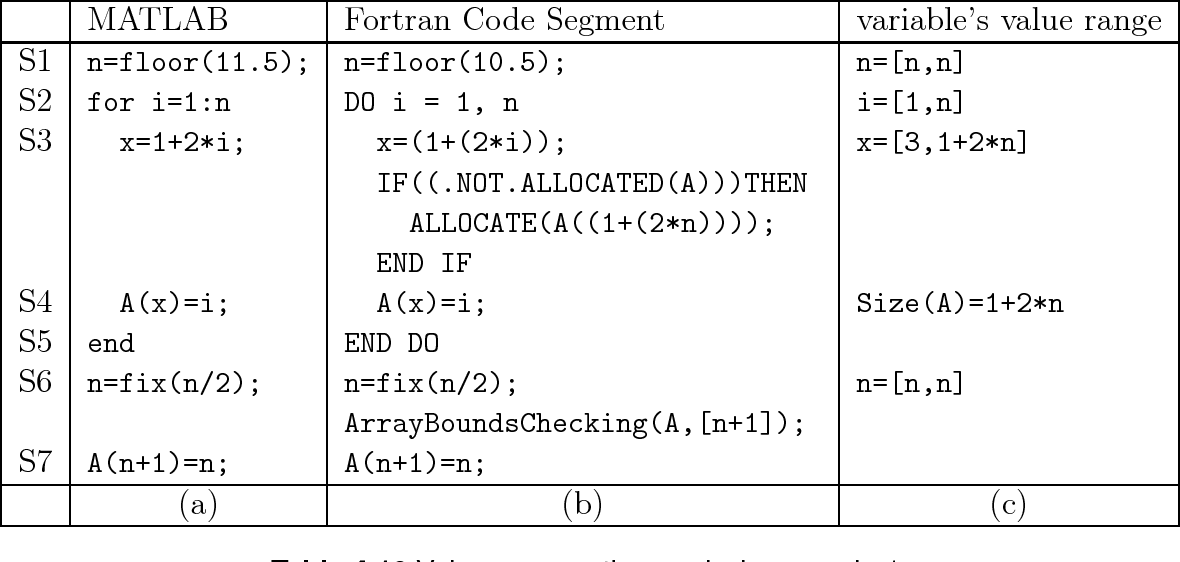
Pdf Mcfor A Matlab To Fortran 95 Compiler Semantic Scholar

Some Tests Failed In Ubuntu 18 With Gfortran Issue 142 Goddard Fortran Ecosystem Pfunit Github

Walking Randomly Fortran

Unified Memory Now For Cuda Fortran Programmers Nvidia Developer Blog

Application Of Fortran 90 To Ocean Model Codes

Fortran 90 Features Ohio State University Fortran 90 Features 4 Fortran 90 Objectives Language Pdf Document

Pdf Object Oriented Techniques For Sparse Matrix Computations In Fortran 03 Semantic Scholar
2
2
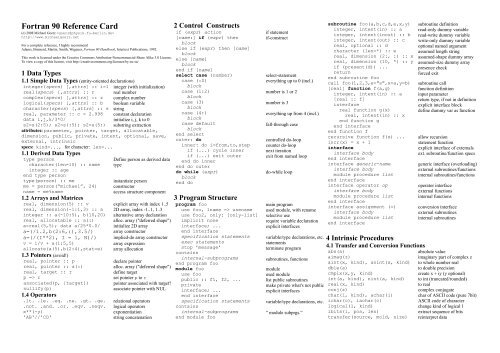
Fortran 90 Reference Card Cheat Sheet

Automatic Fortran To C Conversion With Fable Abstract Europe Pmc
Logo
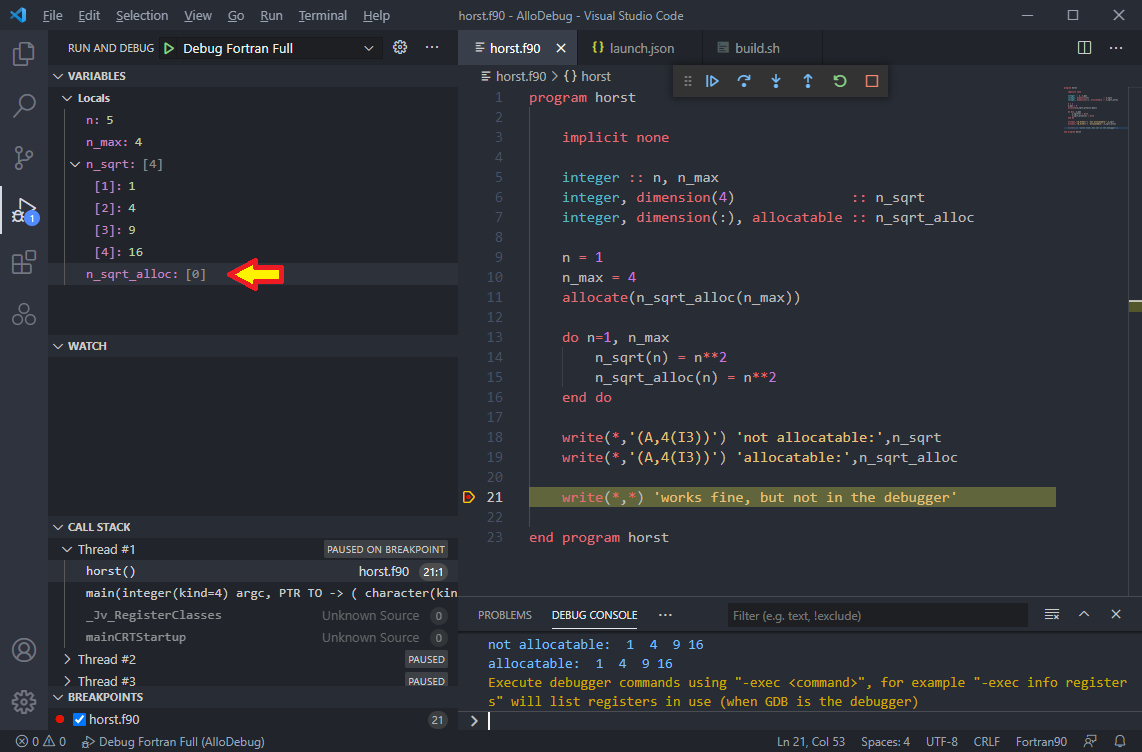
Gdb Debugger Allocatable Arrays Not Shown Githubmemory
2
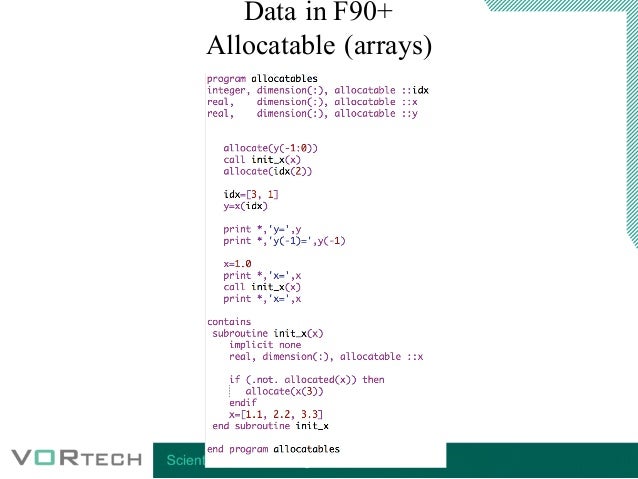
無料ダウンロード Fortran Allocate

Fortran Stack Overflow Issue Stack Overflow

Dictionary M Allocatable Problems With Compiling Gc 12 7 1 Issue 261 Geoschem Geos Chem Github
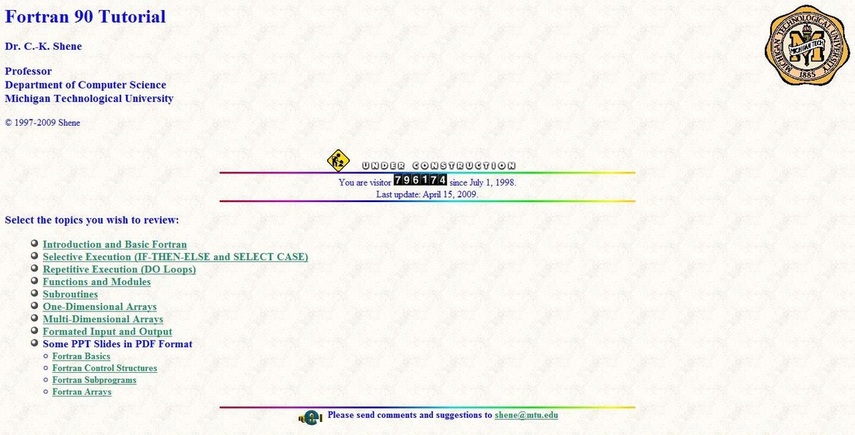
Fortran90 Computational Fluid Dynamics Is The Future

Example Of Fortran Code And Device Variable Point Wise Expression Download Scientific Diagram

Question 2

無料ダウンロード Fortran Allocate

Introduction To Fortran Serial Programming A Simple Example

Porting Scientific Research Codes To Gpus With Cuda Fortran Incompre

Fortran An Overview Sciencedirect Topics
2

Mvs 3 8j From A Business Programmer Perspective
2
Wg5 Fortran Org
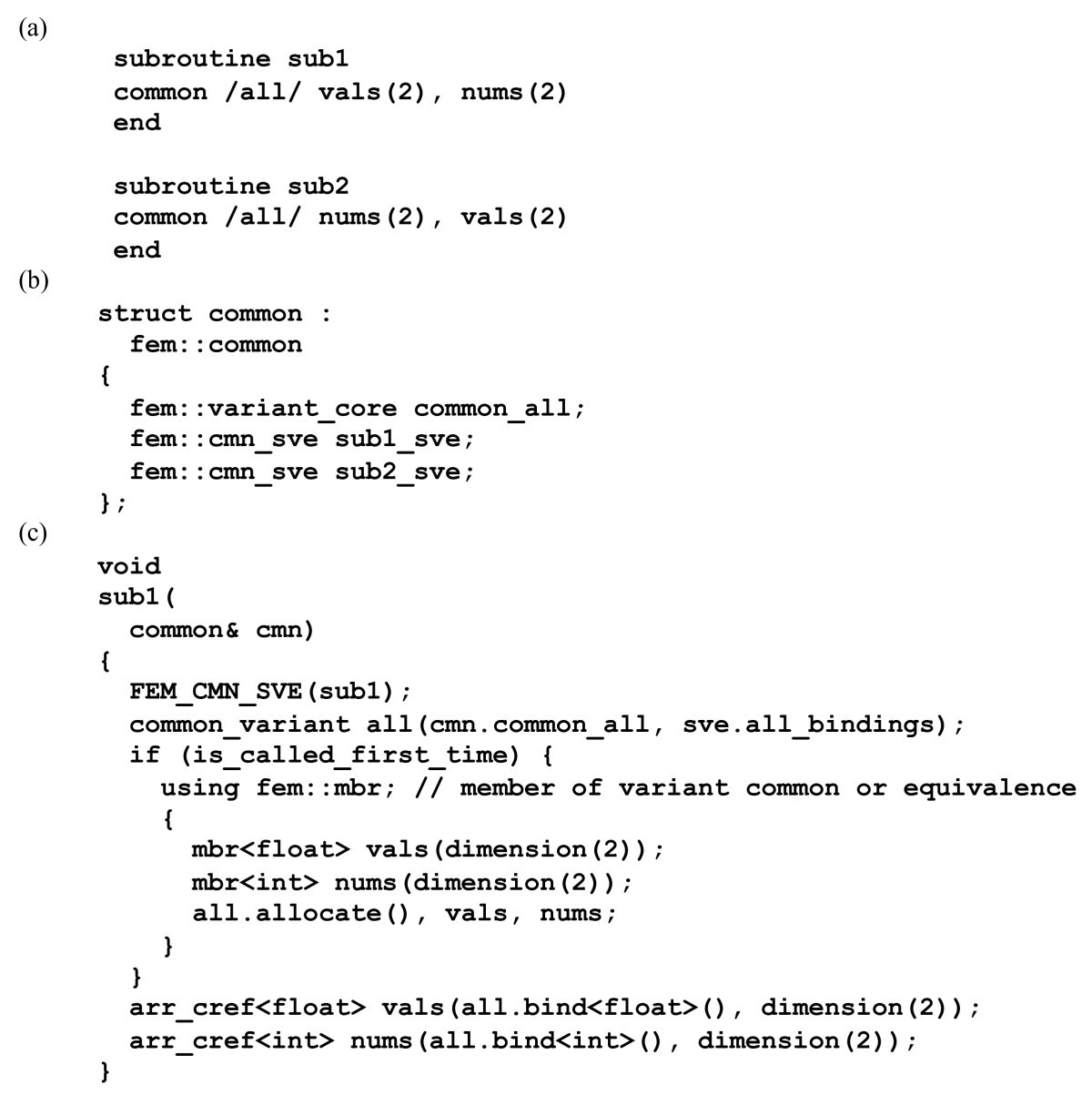
Automatic Fortran To C Conversion With Fable Source Code For Biology And Medicine Full Text
1
2
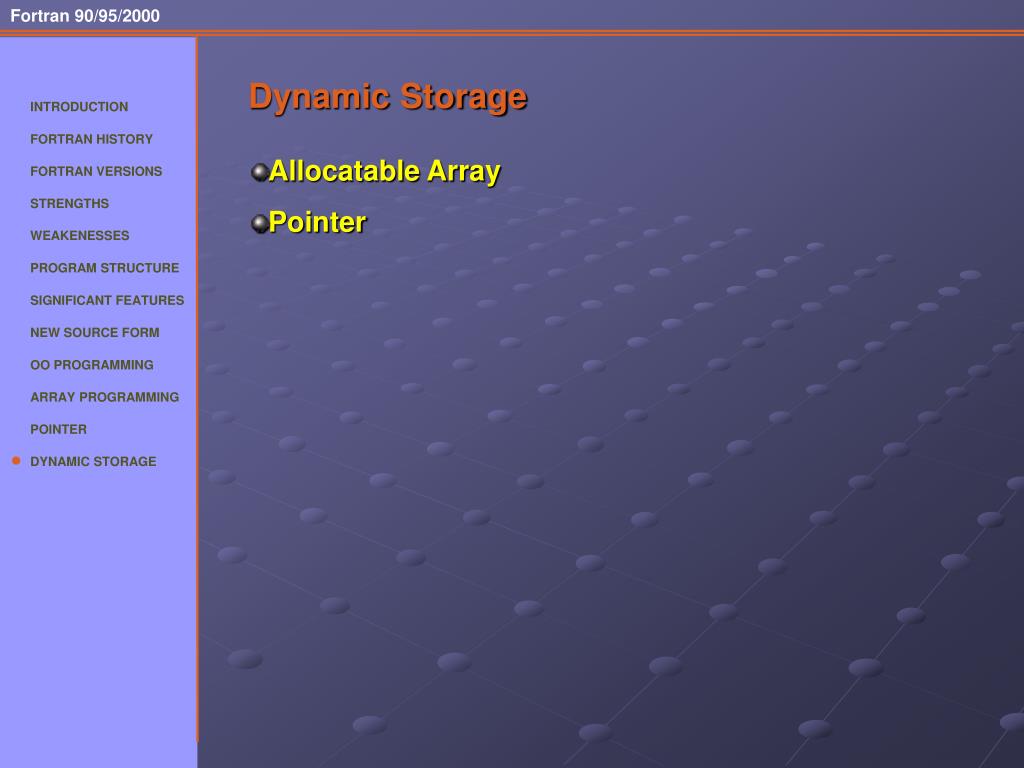
Ppt Fortran 90 Powerpoint Presentation Free Download Id

Problems With Allocatable Arrays Real8 Accessing Ranges Not Allocated In Arrays In Fortran Intel Communities
Analyzing Stock Price Time Series With Modern Fortran Part 2 By Milan Curcic Modern Fortran Medium

How To Allocate An Array In Fortran Youtube

A Survey On Resource Allocation In High Performance Distributed Computing Systems Sciencedirect

Coarray Fortran Opensource Compilers And Tools For Scalable
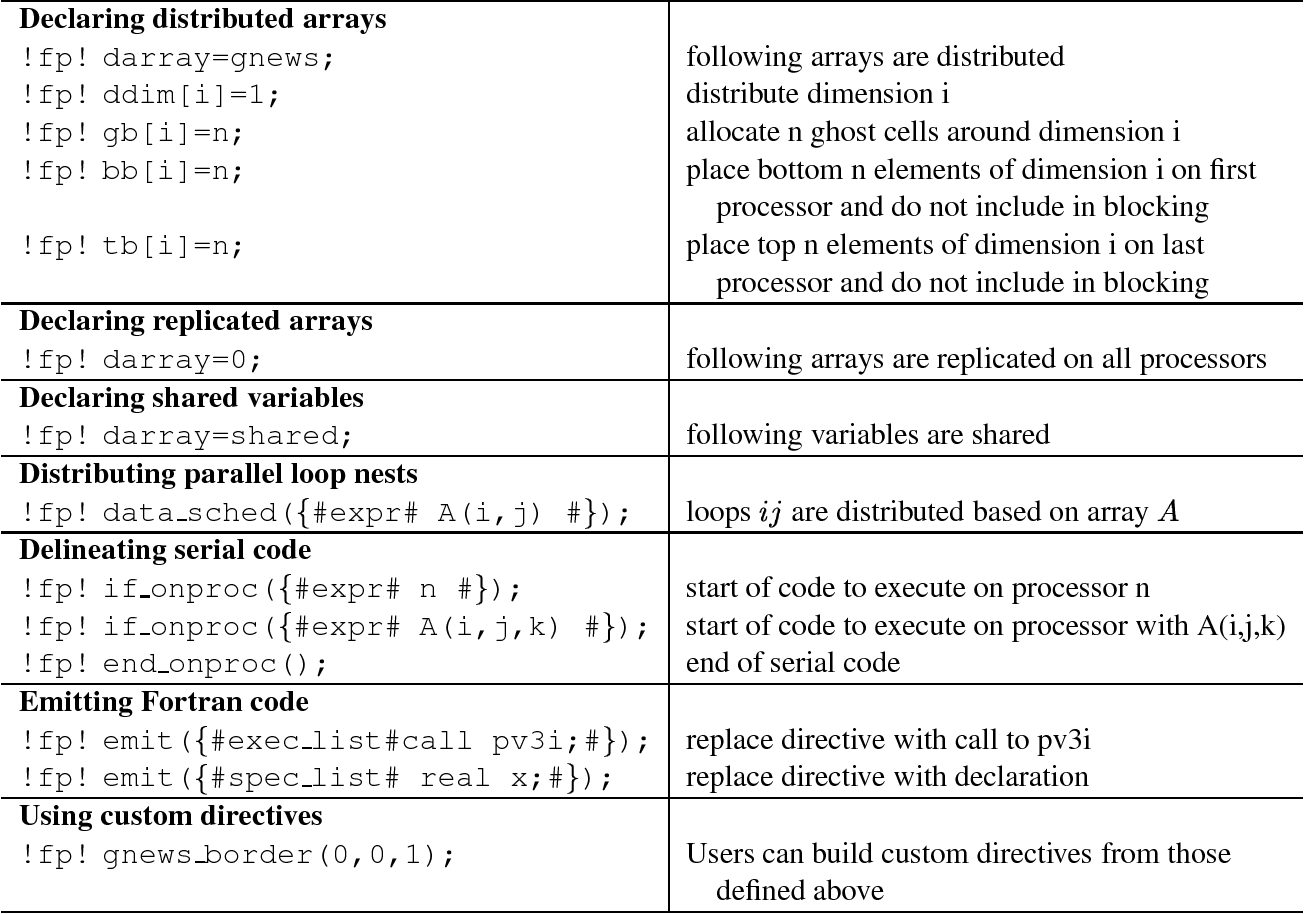
A Programmable Preprocessor For Parallelizing Fortran 90 Semantic Scholar
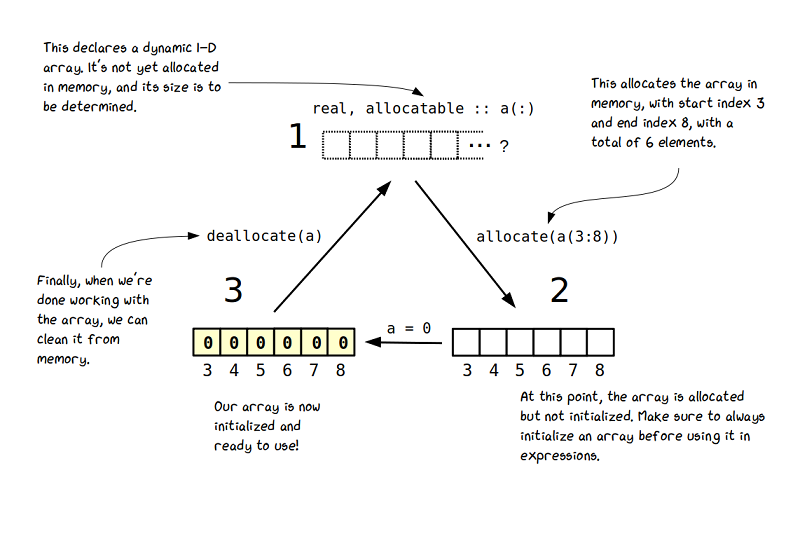
5 Analyzing Time Series Data With Arrays Modern Fortran Building Efficient Parallel Applications
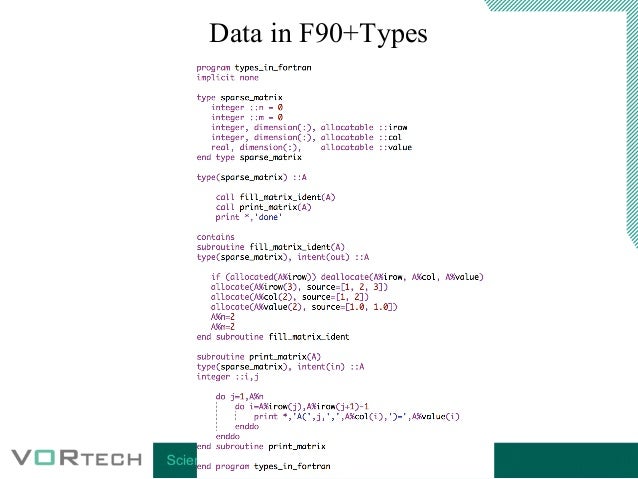
無料ダウンロード Fortran Allocate
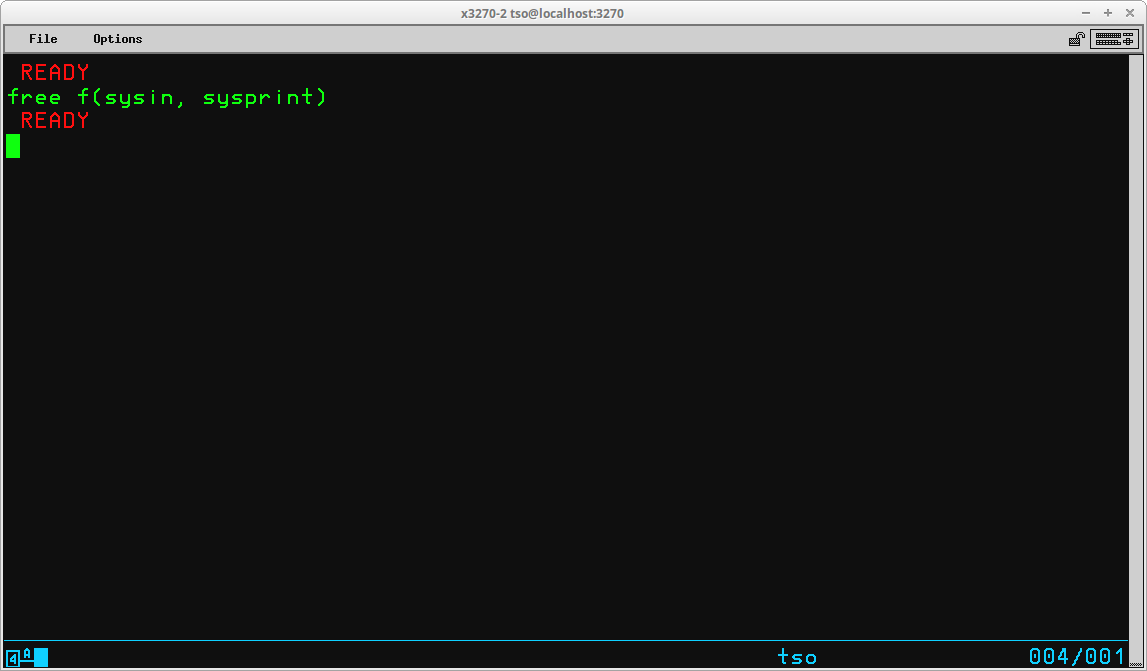
Tso Tutorial

How To Program In Fortran With Pictures Wikihow

Fortran 90 For Scientists And Engineers Hahn Brian Amazon Com Books

Totalview Memory Debugging In Parallel And Distributed Applications
2
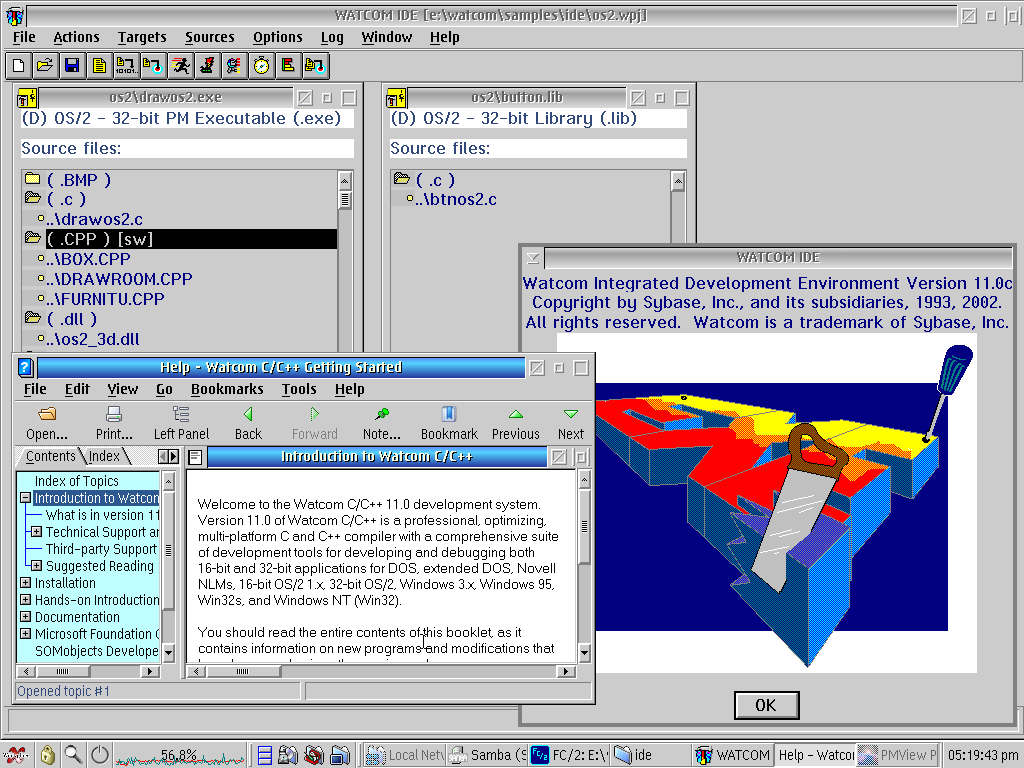
Watcom C Fortran Ecsoft 2
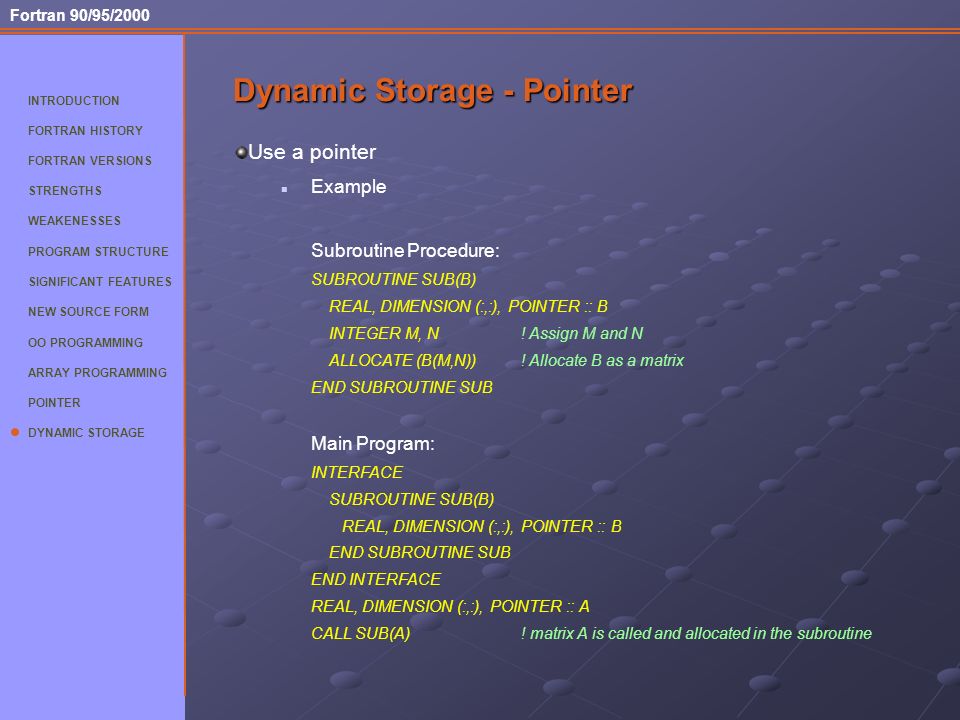
Fortran 90 Yetmen Wang Fortran 90 95 00 Introduction Fortran Versions Program Structure New Source Form Oo Programming Array Programming Significant Ppt Download
1

Fx3 Fortran Source Level Debugger Absoft
1

When Good Compilers Go Bad Qmul Its Research Blog

Gsm Solver
Wg5 Fortran Org
2

Modernizing Modularizing Fortran Codes With 03 Standards

Pdf Dynamic Memory De Allocation In Fortran 95 03 Derived Type Calculus
2

Application Of Fortran 90 To Ocean Model Codes Mark Hadfield National Institute Of Water And Atmospheric Research New Zealand Ppt Download

Fortran Wikipedia

Numerical Recipes In Fortran 77 The Art Of Scientific Computing Press William H Flannery Brian P Teukolsky Saul A Vetterling William T Amazon Com Books

Mathcode A System For C Or Fortran Code Generation From Mathematica The Mathematica Journal

Sc16 Preview Modernizing Modularizing Fortran Codes
2

Walking Randomly Fortran

Solving Pdes With Pgi Cuda Fortran Part 2 Introduction To Pgi

Example Of Fortran Code And Device Variable Point Wise Expression Download Scientific Diagram
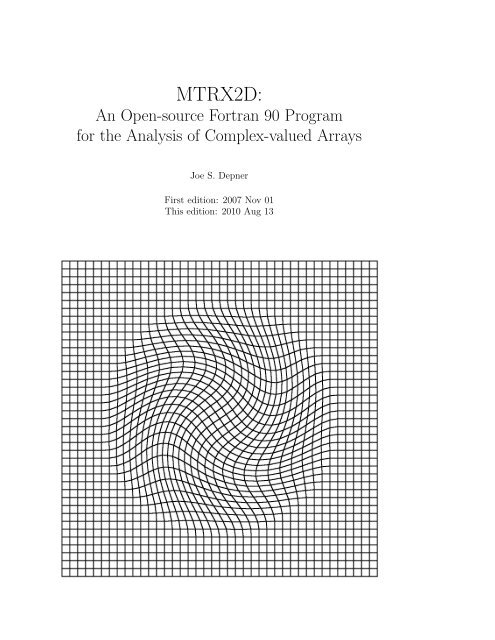
Mtrx2d An Open Source Fortran 90 Program Depner Photo



